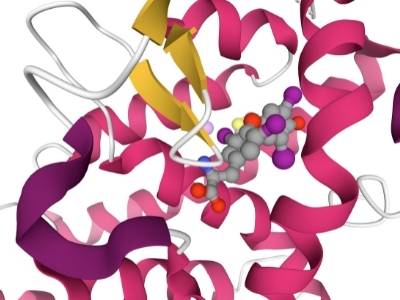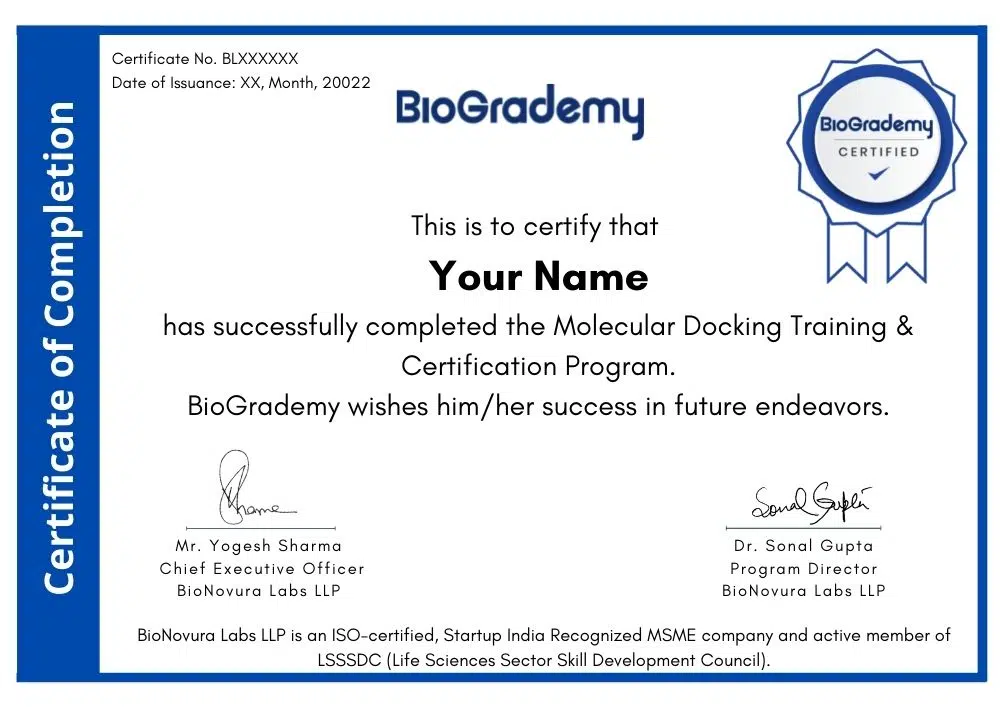No products in the cart.
Molecular Docking Certificate Course
Are you looking to enhance your skills and take your career to the next level? Look no further than our Molecular Docking Certification Course! This comprehensive course is designed to equip you with the knowledge and expertise to excel in the field of molecular docking.
Ratings:
Students Enrolled: 4721
Created By: Dr. Nikita Bora, Ph.D.
Offer Expires In
Days
Hours
Minutes
Seconds
Just 3 Seats Remaining
17 out of 20 Enrolled Already
This Online Course Includes
- Certificate of Completion
- 30 Hours Video Content
- Lifetime Access
- Self-Paced Learning





The in-depth knowledge gained by completing this course is immense. I would suggest every individual to take this course. This will not just teach docking but all other aspects related to it.
Best Course.
best course
It was a very useful course. Practical sessions were more interesting.
My research is on docking and this curriculum from Biogrademy has helped me in ways unimaginable. Very user friendly and academically-sound